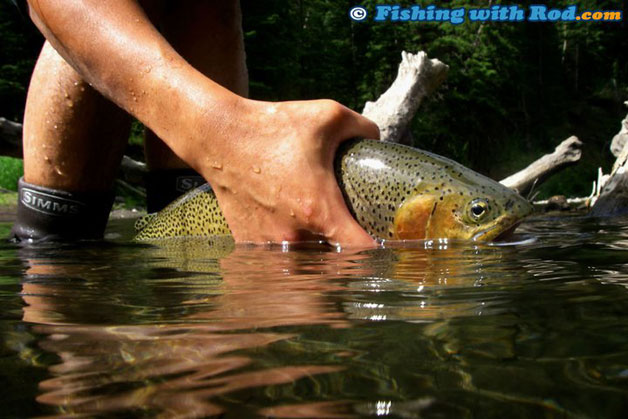Fishing in BC: Catch and Release
By Rodney Hsu, Fishing with Rod

Although being able to keep your catches for a fine meal is what draws most of us to fishing, there are times when a fish is required to be released. If a fish is too small, protected, ready to spawn or if you have already retained your limit of fish, then you are required to put that fish back in the water.
In British Columbia, catch and release has become a conservation strategy that sustains the high standard of our recreational fisheries. By releasing smaller fish, you ensure that they become bigger fish to catch in the future. By release big fish, you ensure that they spawn and produce more fish.
There is always a slim chance that the fish you release does not survive, so it is absolutely important to do your best when releasing a fish to maximize its chance of survival.
Here are some tips that can be helpful for you when releasing a fish:
Always keep the fish in the water: If the fish that you intend to release is brought onto dry land, then you risk the chance of damaging its body. A fish kept out of the water for too long, oxygen depletion may cause permanent internal damages. Fish live in the water, so please keep them in it as much as possible.
Wet your hands before handling: Before grabbing the fish, it is important to wet your hands. Fish are coated with protective slime that prevents them from developing external damages. Dry hands may remove slime and cause infections on the fish so make sure your hands are wet before handling your catch. Gloves should also not be used as most fabrics may cause the same damages.
Grab it the right way: If the fish is small, you can simply grab the fish by cradling its abdomen in the water and remove the hook. If the fish is large then both hands are required, the best way is to use one hand to grab onto the tail while using the other to cradle the its abdomen. The entire process can be done in the water. Never grab the fish by its the gills! For big fish, a knotless net can be very advantageous
Take a quick snap: When you wish to take a photo of your catch, have the camera switched on and choose the correct settings while keeping the fish in the water. When ready, pick the fish up for a couple of quick snap before returning the fish back into the water. The entire process should take less than ten seconds.
Revive before releasing: After a long batter, your fish may often be tired. Make sure your fish regain enough energy before being released. You can do so by holding the fish in the water and gently move the fish back and forward. If you are fishing in a river, then have the fish facing upstream. When your fish is ready, it will begin swimming out of your hands voluntarily.
These tips are generic guidelines that may help you to practice catch and release easily. Every fishing scenario is different, therefore the release method may vary. The key point to remember is to minimize the amount of stress on the fish.

